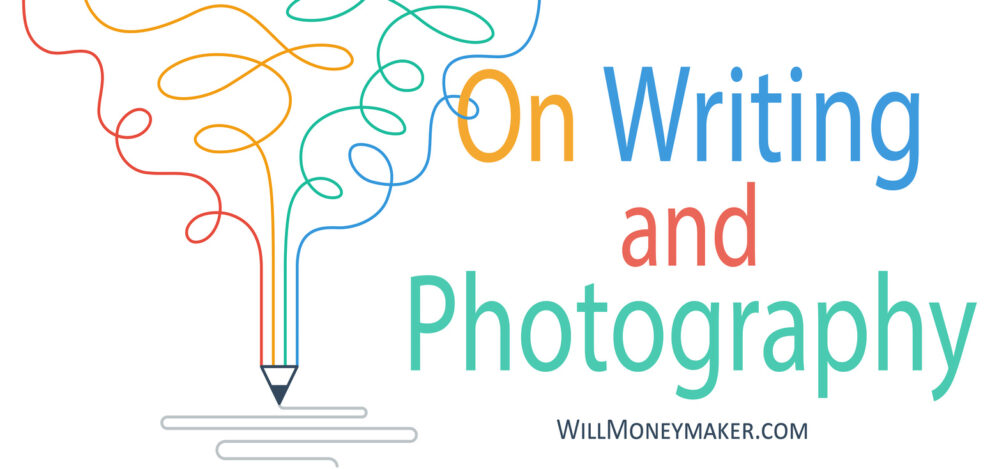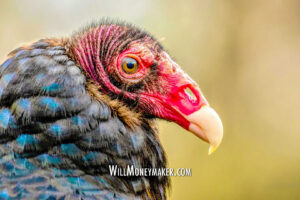Our art is the image, or so most photographers think as they are creating new photographs. But is that the end of it? Or can we add something more to our images? In fact, for many photographers, photography is intertwined with writing. It doesn’t necessarily need to be this way, but sometimes pairing imagery with the written word is a great way to give the viewer a more complete artistic experience.
Of course, there are other reasons to write as a photographer, too. Artists’ statements or biographies — not everything you’ll write will be centered around an image or a photo project. Since there are several different types of photographic writing you may run across throughout your career, let’s take a little bit of time to discuss them.
The Artist’s Statement
If you are pursuing fine art photography as a career, then you almost certainly will need to write an artist’s statement someday — or more likely, several, as you publish new books or have gallery showings. That is precisely what these statements are: A short biographical sketch meant to accompany a body of artwork, whether that artwork is on a website, in a gallery or published in a book or magazine.
What should be in your artist’s statement? An artist statement usually tells a little bit about your artistic self — your experiences and inspirations, perhaps a brief mention of formal education, prior publications or most notable works. But the most important thing is that you express who you are as an artist and why you created the work that is on display. Artists’ statements are almost always used for groupings of images, either a specific project you’ve been working on or your body of work as a whole.
The Biography
Unlike the artist’s statement, the biography is a bit more formal. Usually, you’ll write one if you plan on publishing books or having a photography website. Instead of describing your inspirations for a particular project, you can talk about some of the things you believe in — the driving forces behind your art in general. In addition, you will want to mention things like relevant schooling and notable achievements, including book or magazine publication, art prizes, gallery showings and so forth.
The Essay
The essay is quite easily the largest and most diverse topic. And, I think, perhaps it is the most important topic. Lengthwise, an essay can be almost anything — a short paragraph, or several pages, hundreds of words describing your thoughts. Generally, shorter passages are reserved for single photographs, while essays that span multiple pages accompany larger projects.
Sometimes photographers misconstrue the intent of the essay. We have a habit of listing off all the gear and settings we used to take an image. It reads something like, “Canon MKIV, 70-300mm, f/6, 1/250. Now, fellow photographers can appreciate this because now we know the gear and settings used to create the photograph. But what about the non-photographers that make up a vast portion your viewer base? To a non-photographer, these cryptic notations have little to no meaning.
So, when you write an essay, short or long, what do you write about if not the gear that you used? This goes back to what I talked about earlier, how writing can help complete the artistic experience for the viewer. There are any number of things that you can write about, but most commonly, photographers choose to write about what the photograph or group of photographs means.
This doesn’t necessarily mean that you need to spell it all out in plain language. On the contrary, leaving something to the imagination is what drives people to think more deeply about art. However, if you describe the photograph’s overtones, it’s major themes, this helps steer people in the right direction if the meaning is somewhat ambiguous.
If you want to get the meaning across in no uncertain terms, then, by all means, describe exactly what the image means to you and what you want others to take away from it. This is common in photography that deals with some kind of activism but is not necessarily limited to those genres. Rather than debating meanings, this gives the photographer the power to lay it all out for viewers to understand.
Finally, you can take a completely different route. Talk about ideas that aren’t inherently evident in the photographs. These ideas could be tangential, or they could be the underlying force that first led you to create this image. Talk about several different meaning that the photograph could have, or talk about the various unrelated things that you were thinking about during the creative process. This gives viewers that much more to think about, and they can take away from the image what they will — either the meanings you hinted at, or their own special meanings that your work evoked.
Should Photographs Stand On Their Own?
Some photographers will debate that the entire point of the art is that the images stand alone, telling their own story to anyone who may look at them. And, that is perfectly fine. In fact, that is how most photographers operate, by simply letting the images do the talking.
But, as I have said, text can help to make the experience more complete. There is simply more information available for the audience to take in. They aren’t just examining the details of the image. They are also looking at what you have written and using that to guide the way they experience the image. Perhaps your words will point out details they would not have otherwise noticed, or it will make them think more abstractly.
And it isn’t just the viewer that benefits. You, as you sit down to compose an essay or even a biography or artist’s statement, will have the change to reflect. Use that time to think more deeply about your work and what it truly means to you.
Writing: You may never need to do it, but chances are, you’ll at least have to produce an artist’s statement or biography. Essays are a personal choice, but many photographers find that they enjoy the essay writing process as much as they did to create the photographs that the essay is based on.





